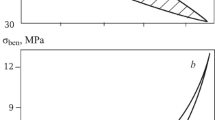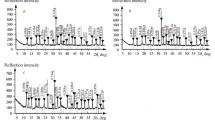Abstract
It is shown that the introduction of granodiorite from the Severskii granite quarry, the control of the granular composition of mixtures, and the use of a combined method for molding products based on Buskul’skoe clay make it possible to obtain an acid-resistant brick with steady properties and sizes, a higher strength (105 MPa), and a low shrinkage (6.3%). All properties of this product satisfy the requirements of GOST 474–90 for acid-resistant brick of class A.
Similar content being viewed by others
References
M. O. Yushkevich and M. I. Rogovoi, Technology of Ceramics [in Russian], Stroiizdat, Moscow (1969).
P. P. Budnikov, A. S. Berezhnoi, N. A. Bulavin, et al., Technology of Ceramics and Refractories [in Russian], Stroiizdat, Moscow (1962).
V. F. Pavlov, Physicochemical Principles of Firing Construction Ceramics [in Russian], Stroiizdat, Moscow (1977).
Author information
Authors and Affiliations
Additional information
__________
Translated from Steklo i Keramika, No. 3, pp. 17–19, March, 2006.
Rights and permissions
About this article
Cite this article
Kashcheev, I.D., Pavlova, I.A. Dependence of properties of acid-resistant products on the molding method. Glass Ceram 63, 86–88 (2006). https://doi.org/10.1007/s10717-006-0044-6
Issue Date:
DOI: https://doi.org/10.1007/s10717-006-0044-6




